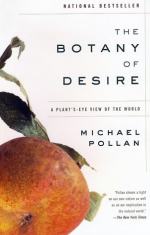
|
| Name: _________________________ | Period: ___________________ |
This test consists of 15 multiple choice questions and 5 short answer questions.
Multiple Choice Questions
1. ______ is the unit of money used in Holland. After 1635, the price of a bulb of Switzers went from 60 to 1500.
(a) Marks.
(b) Guilders.
(c) Euros.
(d) Dollars.
2. Appleseed was able to compete with other apple cultivar sales because his trees were ______.
(a) Low quality.
(b) High quality.
(c) Easily accessible.
(d) Cheap.
3. Ralph Waldo Emerson, who knew a thing or two about natural history, called the apple, _______
(a) The best treat.
(b) A feeling of home.
(c) The Canadian fruit.
(d) The American fruit.
4. Instead of wind and water moving genetic material around, the emerging plants were now enlisting the help of ______.
(a) Mold.
(b) Animals.
(c) Viruses.
(d) Bacteria.
5. ______ orchard has become a kind of museum for several different apple species dedicated to maintaining the diversity.
(a) Indiana.
(b) Ohio.
(c) Geneva.
(d) Mansfied.
6. The book states that the presence of flowers is a reliable predictor of future _____ and therefore was important to humans in the past.
(a) Rain.
(b) Animals.
(c) Food.
(d) Water.
7. Before flowers, sexual reproduction consisted of _____ being dispersed by the wind to be caught by other plants.
(a) Pistils.
(b) Stamens.
(c) Pollen.
(d) Petals.
8. Part of the Americanization of the apple had to do with the character of Johnny Appleseed whose real name was ______.
(a) John Chapman.
(b) William Jones.
(c) Phil Forsline.
(d) John Calhoun.
9. According to the book, the plants that form flowers and then encased seeds are known as ______.
(a) Gymnosperms.
(b) Echinoderms.
(c) Angiosperms.
(d) Conifers.
10. Chapman practiced the faith of ______ and was known to launch into sermons when visiting.
(a) Pessimism.
(b) Protestantism.
(c) Catholocism.
(d) Swedenborgism.
11. The apple was first introduced to North America with the initial waves of the ______ immigration.
(a) Canadian.
(b) Mexican.
(c) European.
(d) Middle Eastern.
12. Chapman was known to go _______ in all kinds of weather and took it as a matter of pride in his toughness.
(a) Without his hat.
(b) Without a coat.
(c) Hunting.
(d) Barefoot.
13. Appleseed used most of his crops in order to make ______, which led him to be thought of as an 'American Dionysus.'
(a) Apple crisp.
(b) Fermented cider.
(c) Apple pie.
(d) Apple vodka.
14. Flowers have been given the ability to attract other species using a variety of senses except ______.
(a) Visual.
(b) Olfactory.
(c) Tactile.
(d) Auditory.
15. One winter, Appleseed set up a house in a _______ outside Defiance, Ohio where he operated a pair of nurseries.
(a) Hollowed-out sycamore stump.
(b) Log cabin.
(c) Swamp.
(d) Airplane hanger.
Short Answer Questions
1. The book states that certain flowers are reminiscent of Greek Gods. The rose and the peony are stated to be flowers of ______.
2. The apple does not breed simply from seed. Thus all trees that produce the same type of apples are _______ of the original tree.
3. Fortius, a professor, could be seen patrolling the streets of the city, ______ any tulip that he encountered.
4. _______ is a social ritual of sanctioned craziness and release. It is a way for the community to temporarily indulge its Dionysian urges.
5. Teaching men how to ferment the juice of the grape, ______ had brought civilization the gift of wine.
|
This section contains 481 words (approx. 2 pages at 300 words per page) |

|




